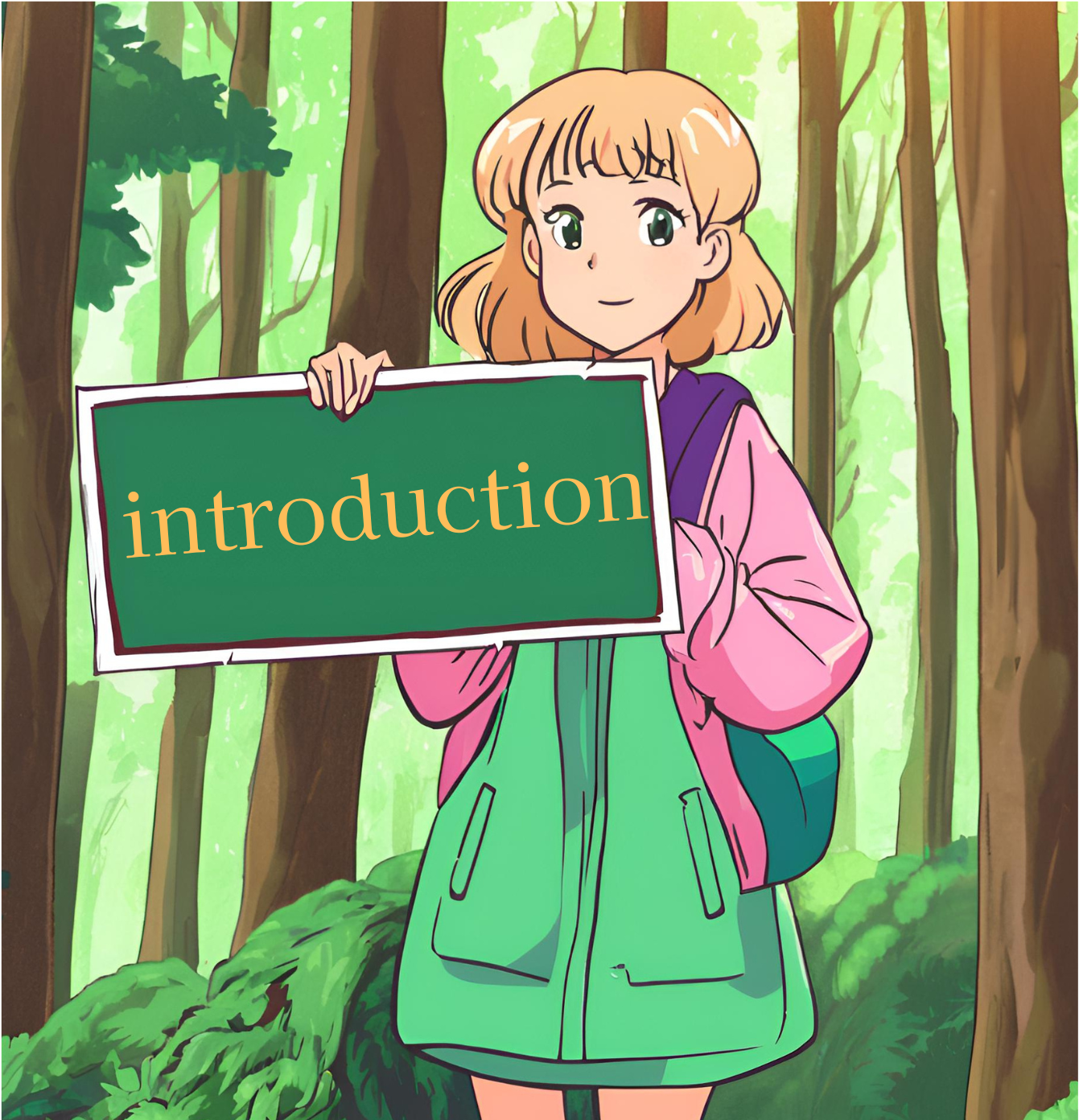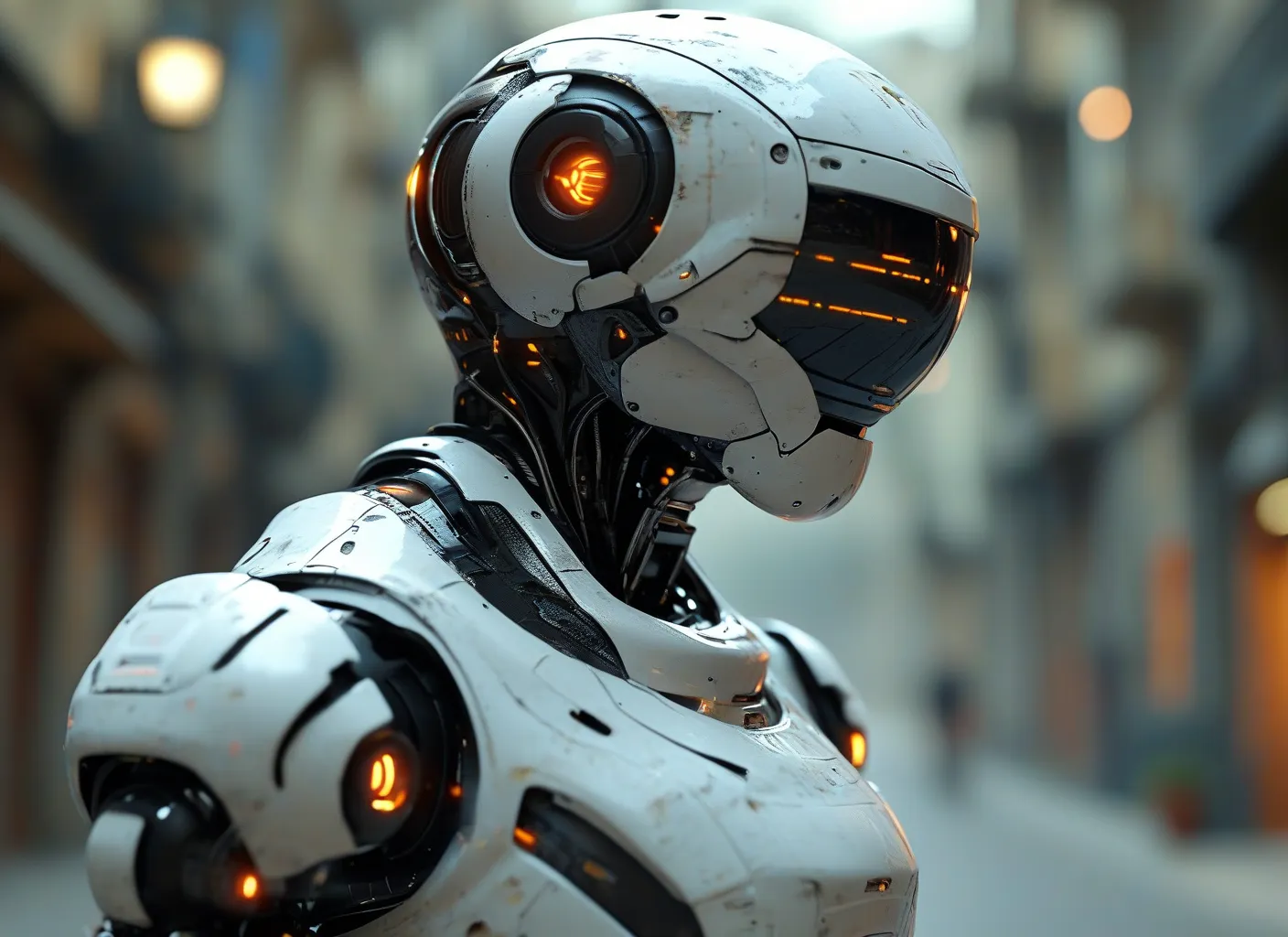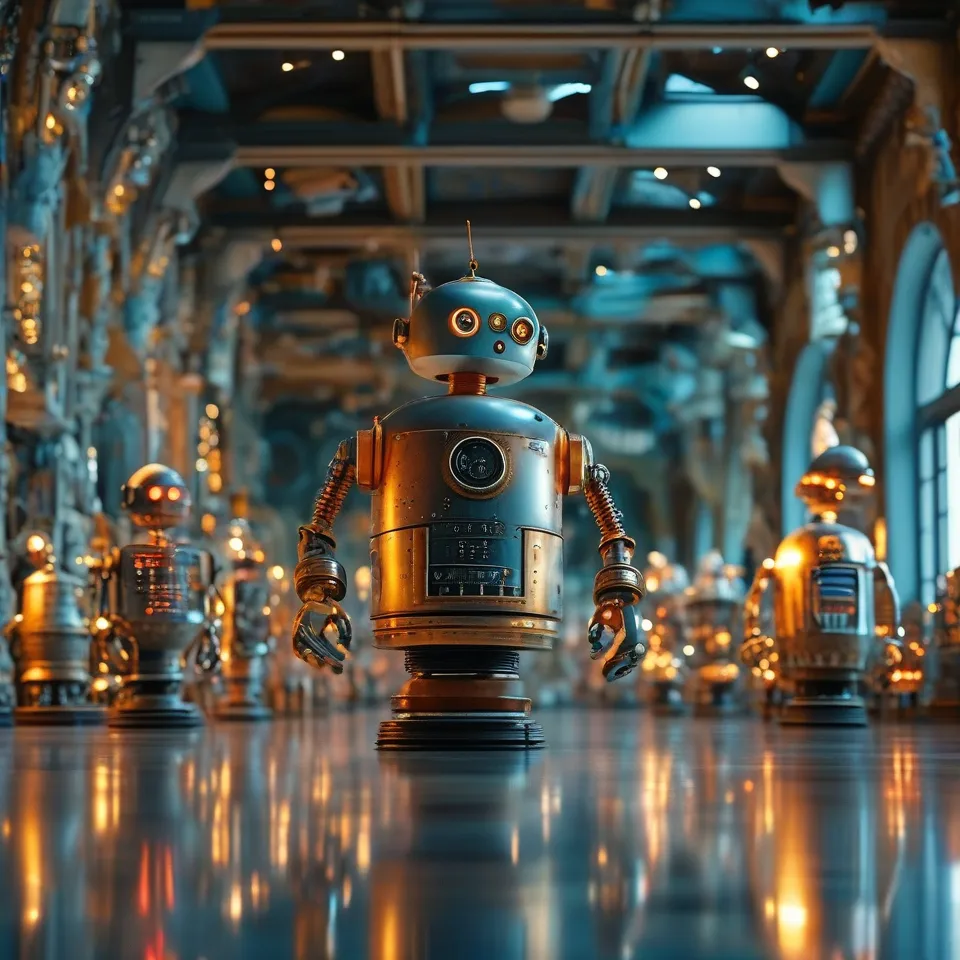Article Structure:
- Introduction to Atom: The Beginning
- Overview of the anime, including its release date and production details.
- Mention the connection to Osamu Tezuka’s Astro Boy as a prequel and the significance of this connection.
- Highlight the central premise involving the creation of AI robots by the two main scientists.
- Plot Overview and Key Themes
- Outline the main storyline, focusing on the development of the robot A106 and the journey of the two scientists, Umataro Tenma and Hiroshi Ochanomizu.
- Discuss key themes like artificial intelligence, humanity, and technological ethics, and how these are explored in the series.
- Character Profiles and Relationships
- Introduce the main characters, including Umataro Tenma, Hiroshi Ochanomizu, and A106.
- Explore the relationships between the scientists and their creation, as well as their contrasting philosophies on AI development.
- Discuss how these relationships drive the narrative and add emotional depth.
- Animation and Visual Style
- Highlight the unique animation style and production quality, particularly the detailed mechanical designs and futuristic aesthetics.
- Discuss how the animation enhances the storytelling, particularly during action sequences and emotional moments.
- Mention any notable improvements in animation compared to similar sci-fi anime series.
- Cultural Impact and Reception
- Analyze the reception of Atom: The Beginning among anime fans and critics, both in Japan and internationally.
- Discuss the series’ impact on the sci-fi genre and its contribution to the legacy of Astro Boy.
- Highlight any awards, recognitions, or memorable moments that have contributed to the series' ongoing popularity.
Contents
Introduction to Atom: The Beginning

"Atom: The Beginning" is an anime that serves as a prequel to Osamu Tezuka's iconic Astro Boy, bringing a fresh perspective to the origins of one of Japan's most beloved characters. Released in 2017, the series was produced by OLM, Production I.G, and Signal.MD, each bringing their expertise to the animation and storytelling. Set in a time before the events of Astro Boy, this anime explores the journey of two visionary scientists, Umataro Tenma and Hiroshi Ochanomizu, as they work on developing the perfect AI robot.
The connection to Astro Boy is significant, as it delves into the backstory of how artificial intelligence and robotics advanced to the point where Atom, also known as Astro Boy, could come into existence. This series offers fans a deeper understanding of the world that would eventually lead to the creation of Atom, a symbol of hope and humanity in a world dominated by technology. For longtime fans of Tezuka's work, Atom: The Beginning adds layers of complexity to the universe they have come to love.
At its core, the anime focuses on the contrasting philosophies of Tenma and Ochanomizu regarding AI development. Tenma, driven by ambition, seeks to create a godlike AI that surpasses human limitations, while Ochanomizu values the ethical implications of AI, believing in creating robots that coexist with humanity. Their contrasting views set the stage for the series' central conflict, which revolves around the creation of their prototype robot, A106, affectionately called "Six." Through their collaboration and rivalry, the anime explores deep questions about the role of AI in society and what it means to be human.
Plot Overview and Key Themes

"Atom: The Beginning" follows the journey of two brilliant scientists, Umataro Tenma and Hiroshi Ochanomizu, who are driven by their passion for robotics. Their goal is to create an AI-powered robot, A106, that embodies both intelligence and human-like qualities. The story centers on their trials, experiments, and the moral dilemmas they face as they push the boundaries of technology.
A key theme in the series is the exploration of artificial intelligence, raising questions about what it means to be human. The show delves into ethical issues surrounding AI, such as the responsibilities that come with creating sentient beings. It also explores the tension between technological advancement and the potential consequences for humanity, offering viewers a thoughtful take on the future of robotics.
Throughout the series, the relationship between the creators and their creation is a central focus. The bond between A106 and the scientists reflects the complexities of creator-creature dynamics, as Tenma and Ochanomizu grapple with the unintended consequences of their work. The series encourages viewers to reflect on the moral implications of technological progress and its impact on society.
By blending action, drama, and philosophical inquiry, "Atom: The Beginning" offers a compelling narrative that not only serves as a prequel to Osamu Tezuka’s "Astro Boy" but also stands as a thought-provoking exploration of AI and ethics.
Character Profiles and Relationships

In "Atom: The Beginning," the dynamic relationships between the key characters, Umataro Tenma, Hiroshi Ochanomizu, and their creation, A106, serve as the heart of the story. Each character brings a unique perspective to the development of artificial intelligence, shaping the narrative in profound ways.
Umataro Tenma is an ambitious and driven scientist who seeks to push the boundaries of AI technology. His approach is bold, often leading him to take risks in pursuit of creating the ultimate robot. Tenma’s character is defined by his intense dedication to his work, sometimes at the expense of ethical considerations. His determination to create a robot that surpasses human intelligence reflects his complex relationship with technology and his desire to make a lasting impact on the world.
Hiroshi Ochanomizu, on the other hand, is more cautious and empathetic. He values the potential of AI but believes that it should serve humanity rather than replace it. Ochanomizu’s relationship with A106 is built on mutual respect and a desire to nurture the robot’s development in a way that honors its emerging consciousness. His compassionate nature serves as a counterbalance to Tenma’s more extreme tendencies, creating a compelling contrast between the two scientists.
A106, the robot at the center of the story, represents the culmination of Tenma and Ochanomizu’s efforts. As the creation of two brilliant minds with differing philosophies, A106 becomes a reflection of both their ideals. The robot’s development and growing awareness drive much of the emotional depth in the series. A106’s journey from a machine to a being with its own identity explores themes of self-discovery and the responsibilities of creators toward their creations.
The relationships between these characters add layers of complexity to the narrative. The contrasting philosophies of Tenma and Ochanomizu create tension, as they grapple with the ethical implications of their work. Their bond with A106 also brings out the human side of their scientific endeavors, making the story not just about technology but about the emotional connections that arise from it.
By examining these relationships, "Atom: The Beginning" delves into the deeper questions surrounding AI development, ethics, and what it means to be human. The interactions between Tenma, Ochanomizu, and A106 drive the narrative forward, adding emotional depth and philosophical inquiry to the series.
Animation and Visual Style

"Atom: The Beginning" showcases a unique and captivating animation style that stands out in the world of sci-fi anime. Produced by a talented team of animators, the series brings Osamu Tezuka's iconic universe to life with a modern touch, blending futuristic aesthetics with detailed mechanical designs. The production quality is consistently high, with the animation enhancing both the storytelling and the overall viewing experience.
One of the most striking aspects of the animation is the intricate design of the robots, particularly A106. The mechanical details are carefully rendered, creating a sense of realism that draws viewers into the world of advanced AI and robotics. The futuristic aesthetic, combined with smooth animation, makes the action sequences engaging and visually impressive. Whether it’s the fluid movements of robots during high-stakes battles or the subtle gestures that convey emotion, the animation effectively supports the narrative.
The attention to detail extends beyond the robots to the world they inhabit. The backgrounds are rich with futuristic elements, yet they retain a grounded quality that keeps the series relatable. The animation team expertly balances the sci-fi setting with human elements, ensuring that the characters and their emotions remain at the forefront. This balance is especially evident during emotionally charged scenes, where the animation subtly enhances the impact of key moments.
Compared to similar sci-fi anime, "Atom: The Beginning" stands out for its dedication to visual storytelling. The fluidity of the action sequences and the expressiveness of the characters add depth to the story, making the series more than just a typical robot anime. The careful integration of CGI and traditional animation techniques elevates the overall production, creating a seamless viewing experience that immerses the audience in the world of A106 and the two scientists who created him.
The improvements in animation quality compared to other sci-fi series are notable, particularly in the way "Atom: The Beginning" blends technical precision with emotional resonance. The series sets a high standard for mechanical design and futuristic aesthetics, ensuring that it remains visually appealing throughout its run. By focusing on both the macro and micro details, the animation enhances the storytelling and solidifies the series' place as a standout in the genre.
Cultural Impact and Reception

"Atom: The Beginning" has garnered attention from both anime fans and critics for its unique take on the origins of one of Japan’s most iconic characters, Astro Boy. As a prequel to Osamu Tezuka’s legendary series, the anime brings a fresh perspective to the sci-fi genre while staying true to the themes and spirit of its predecessor. Its reception in Japan and internationally has been generally positive, with praise directed toward its engaging storyline, high-quality animation, and the exploration of artificial intelligence and ethics.
Fans of the original "Astro Boy" appreciated how "Atom: The Beginning" adds depth to the franchise’s lore, offering insights into the early days of AI development and the moral dilemmas faced by the two scientists, Umataro Tenma and Hiroshi Ochanomizu. The series successfully bridges the gap between the past and future of the Astro Boy universe, making it a meaningful contribution to the overall legacy of Tezuka’s work.
The series’ impact on the sci-fi genre is notable, as it delves into thought-provoking themes such as the boundaries between humans and robots, and the ethical implications of creating artificial intelligence. By focusing on the human side of technological advancements, "Atom: The Beginning" distinguishes itself from other sci-fi anime that often emphasize action over philosophical exploration. This thoughtful approach has resonated with viewers who enjoy both the intellectual and emotional aspects of the narrative.
Critics have also praised the series for its animation quality and the way it brings the futuristic world of robotics to life. The detailed mechanical designs and fluid animation contribute to the show’s visual appeal, making it stand out among other sci-fi offerings. Additionally, the character development and relationships within the series add emotional depth, allowing the audience to connect with the story on a personal level.
While "Atom: The Beginning" may not have achieved the same level of commercial success as some other anime, its contribution to the Astro Boy legacy and the sci-fi genre as a whole cannot be overlooked. The series has earned a dedicated fanbase, and its thoughtful exploration of AI and humanity continues to inspire discussions about the future of technology.
Memorable moments, such as the emotional interactions between the scientists and their creation, A106, have left a lasting impression on viewers. These moments, combined with the show’s philosophical themes, have helped cement "Atom: The Beginning" as a significant entry in the sci-fi anime genre. While it may not have received major awards, its cultural impact is evident in the way it continues to be appreciated by fans of Astro Boy and newcomers alike.




